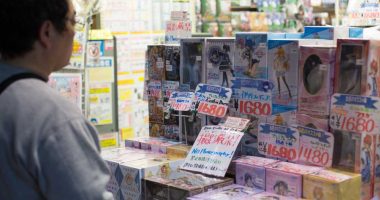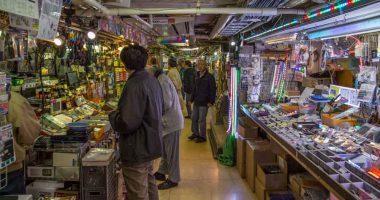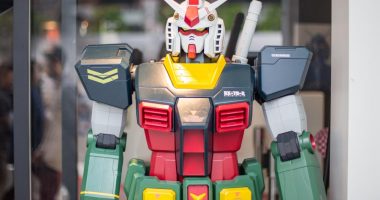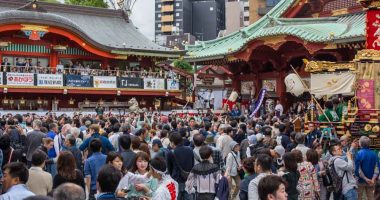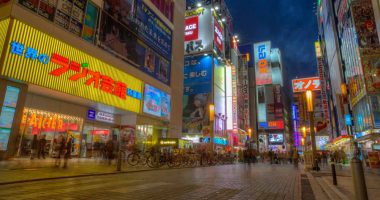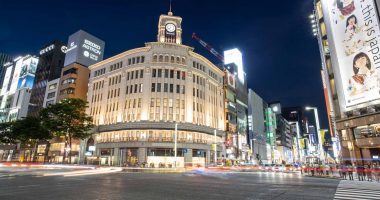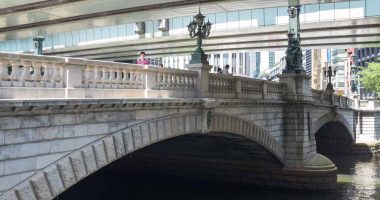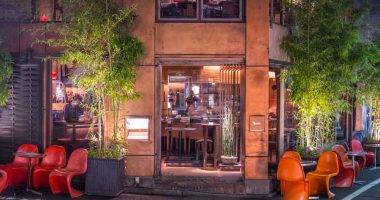Akihabara (秋葉原) was once known as the consumer electronics center of Japan, but today it is equally as famous for its otaku (geek) culture. Maid cafes, x-rated manga booksellers, amine stores, and shops dedicated to teenage idolatry are scattered among stores selling all manner of electronic consumer goods. It is one of the best places to glimpse into another side of Japanese culture—one which has at least partly developed as a form of escapism from the rigid structure of society.
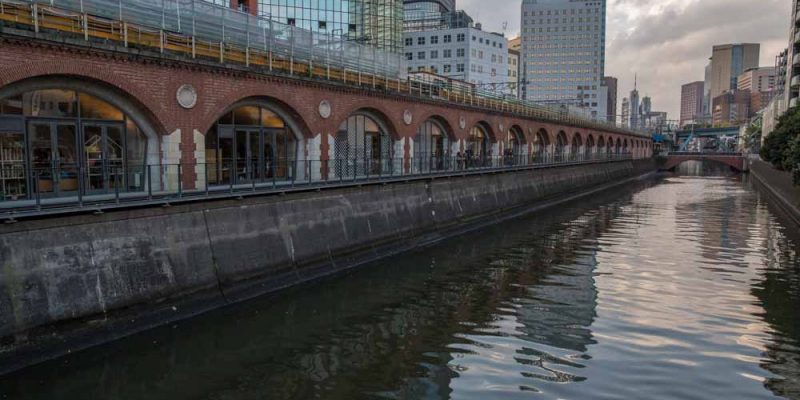
You could start at Radio Kaikan, an iconic building near the JR Akihabara Station Electric Town exit that reopened in 2014. When it first opened in 1962, it was the first “high-rise” building in Akihabara. Today, it has moved with the times and the focus has shifted away from electronics to manga, anime, and “otaku” goods. But if you’ve come in search of the latest gadgets then there’s only really one place you need to head: Yodobashi Camera’s Akiba store, which occupies the first six floors of the 9-floor shopping complex. This branch is the biggest consumer electronics store in Japan (and maybe the world). There is a tax-free counter and English speaking staff are on hand. Heaven for gadget-lovers.
But Akihabara is not all dolls and digital. Redevelopment in recent years is slowly helping it shed its geeky image, and new complexes like mAAch ecute seem to be heralding a new era for the area. The viaduct in which this shopping arcade is housed lay derelict for the best part of 60 years before re-opening following refurbishment in 2013 (the interior arches of the old structure have been preserved, and these now act as dividers for the boutiques and coffee vendors inside). Another example of this trend is 2k540 Aki-Oka Artisan, a line of 50 or so craft stores, galleries, and cafes located under the rail tracks (the unusual name refers to the fact that it is 2km and 540m from Tokyo Station).
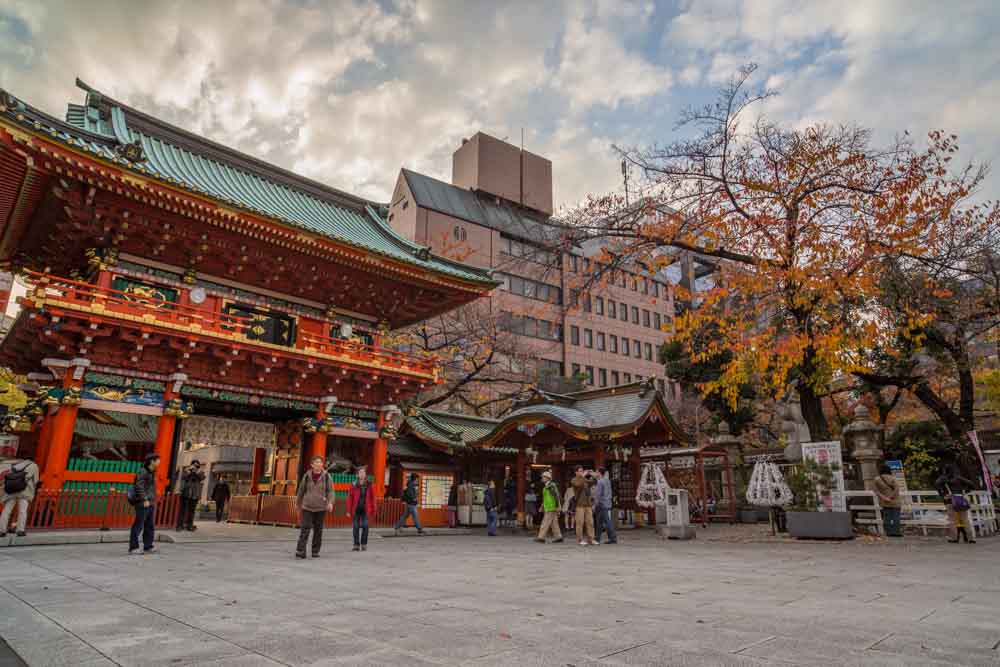
It is best to visit Akihabara on Sunday afternoon when the main road, Chuo Dori, is pedestrianized, allowing you to stroll down and appreciate the gigantic posters and billboards which hang from the buildings either side.
The History of Akihabara
In the 19th century Tokyo was a tinderbox of elongated wooden nagaya (“long house”) all closely packed together in formulaic blocks with only narrow streets separating them, and fires were a common occurrence. In December 1869 a fire in the area left in its ashes a strip of land on which Chinka Shrine (“fire extinguishing shrine”) was built enshrining three gods associated with fire, water, and earth to protect the people from another such disaster. However, the common folk mistakenly took the new shrine to be a place of worship for Akiha-Gongen, a deity better known to safeguard against fire, and began calling it Akiha-sama and Akiha-san (sama and san being suffixed to names to show respect). The name was made official the following year. Akiha Shrine was moved in 1888 to make way for Akiha-no-hara (“The Land of Akiha”) Station, and now resides a short walk north-east of Ueno Station. Over time the station name became the more easily pronounced Akihabara.
Despite its prominence as an electronics mecca, the first markets in the area sold vegetables and fresh produce. It was not until the Sino-Japanese war in the 1930s that the focus moved to electronic components as the demand for wireless radios grew. After Japan’s defeat in 1945, technicians and electrical engineers found lucrative work fixing electronic devices from the odds and ends that could be salvaged during the commodity-scare post-war years. These repair men offered their services from open-air stalls until in 1949 they were prohibited from trading outside by the American occupiers, and so clubbed together to move indoors. Akihabara Radio Center, a warren of small indoor alleyways just north of the station, is the best relic from this history.
As Japan’s economy began its rapid ascent in the 1960s, Akihabara was well-placed to cater for the increasing demand for white goods—refrigerators and color televisions slowly began to encroach on the shelf space of the LEDs and transistors. In the 1970s, 80s and 90s chains such as Bic Camera and Yodobashi Camera spread their footprint nationwide, providing consumers with local access to the latest in electronic gadgets, and threatening Akihabara’s raison d’etre. By the 1990s Akihabara’s niche had moved from electronic components to figurines, anime, and comic books as a section of the next generation sought escapism from the rigid sarariiman lifestyle that awaited many of them after education, and over the next two decades Akihabara became the mecca of otaku culture that we know today.



